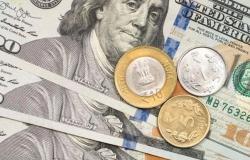The US Dollar Index (DXY) is trading mildly higher at 105.90, buoyed by high US yields amid hawkish bets on the Federal Reserve (Fed). The US economy continues to display robust growth, which has forced markets to delay their expectations on rate cuts.
In the US, the Fed maintains a steady hawkish stance despite soft preliminary PMIs in April. Additionally, persistent high US Treasury yields due to heavy supply injection could further boost the US Dollar. The week’s highlight will be March’s Personal Consumption Expenditures (PCE) on Friday and Gross Domestic Product (GDP) preliminary readings from Q1 on Thursday.
The indicators on the daily chart reflect a mixed scenario. The flat position of the Relative Strength Index (RSI) in positive territory indicates that the buying momentum is present but somewhat subdued as there seems no definitive direction. This suggests that bulls are exerting control but are struggling to gain further ground.
The decreasing green bars of the Moving Average Convergence Divergence (MACD) hint at slowing bullish momentum, making a potential transformative shift into bearish territory possible as the selling force starts to press forward.
However, the bigger picture is slightly more nuanced. Despite this sluggish bullish momentum in the short term, the DXY is currently trading above its 20,100 and 200-day Simple Moving Averages (SMAs). This not only points towards persistent buying pressure but also signals a more long-term bullish bias.
US Dollar FAQs
The US Dollar (USD) is the official currency of the United States of America, and the ‘de facto’ currency of a significant number of other countries where it is found in circulation alongside local notes. It is the most heavily traded currency in the world, accounting for over 88% of all global foreign exchange turnover, or an average of $6.6 trillion in transactions per day, according to data from 2022. Following the second world war, the USD took over from the British Pound as the world’s reserve currency. For most of its history, the US Dollar was backed by Gold, until the Bretton Woods Agreement in 1971 when the Gold Standard went away.
The most important single factor impacting on the value of the US Dollar is monetary policy, which is shaped by the Federal Reserve (Fed). The Fed has two mandates: to achieve price stability (control inflation) and foster full employment. Its primary tool to achieve these two goals is by adjusting interest rates. When prices are rising too quickly and inflation is above the Fed’s 2% target, the Fed will raise rates, which helps the USD value. When inflation falls below 2% or the Unemployment Rate is too high, the Fed may lower interest rates, which weighs on the Greenback.
In extreme situations, the Federal Reserve can also print more Dollars and enact quantitative easing (QE). QE is the process by which the Fed substantially increases the flow of credit in a stuck financial system. It is a non-standard policy measure used when credit has dried up because banks will not lend to each other (out of the fear of counterparty default). It is a last resort when simply lowering interest rates is unlikely to achieve the necessary result. It was the Fed’s weapon of choice to combat the credit crunch that occurred during the Great Financial Crisis in 2008. It involves the Fed printing more Dollars and using them to buy US government bonds predominantly from financial institutions. QE usually leads to a weaker US Dollar.
Quantitative tightening (QT) is the reverse process whereby the Federal Reserve stops buying bonds from financial institutions and does not reinvest the principal from the bonds it holds maturing in new purchases. It is usually positive for the US Dollar.






